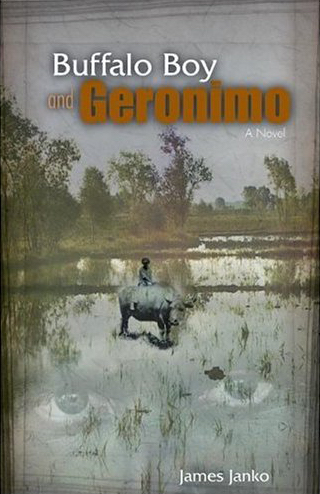 |
Buffalo Boy and GeronimoBy Jerry Lembcke (Reviewer)
Buffalo Boy and Geronimo
I hesitated when a friend recommended Buffalo Boy and Geronimo because I don't read much fiction except as sources for my own research and writing. But I took a chance and I'm glad I did. It was the promise of a good coming-of-age story that I gleaned from the first few pages that drew me in—Hai, a Vietnamese boy, struggling with his emergent masculinity in the context of the war. It's 1970 and Hai will soon have to decide whether to join the ARVN forces of the Republican government or go into the tunnels of Cu Chi with the Viet Cong. For the time being, though, his daily routine of tending Great Joy, his water buffalo, fishing the Sai Gon river for his family's dinner, and imagining how to impress Thien, the village's pubescent "water girl," keeps his mind and emotions entangled with the boundaries of man and nature, child and adulthood, whimsy and reality. Left at that, this would be a story worth reading for what it tells us about life as it was lived by rural Vietnamese people during the war, a side of the story seldom told to Americans about life where the mundane—the daily provision of food and shelter—intersected with the deadly—the intermitting military operations, of both sides, that cut through the land and community year after year. To tell the story, James Janko, returned to Vietnam as a writer to learn about the people he had opposed thirty years earlier as a U.S. Army medic. Janko's introduction of Conchola in the second chapter gives Buffalo Boy and Geronimo the structure it needs to make this a truly outstanding piece of writing, one that like the best of the novel-form tells the reader as much about the Self as the Other. Those familiar with David Maraniss's They Marched into Sunlight will see resemblance in Janko's work to the parallelism Maraniss created by writing the history of the 1st Infantry Division's Black Lions Battalion getting butchered in October 1967, while side-by-side with it, recounting the story of the anti-war movement that brought the University of Wisconsin to a standstill during those same days. Taking the technique to another level, however, Janko develops Hai and Conchola as parallel characters (for his parallel stories). Conchola is a Mexican-American medic in the 25th Infantry that is working in the neighborhood of Hai's village. Like Hai, his anxiety about manhood has generated an emotional jumble that mixes fantasies of his own animal-prowess as a fighter with his detachment from military discipline and, eventually, his disregard for his unit's mission. The Hai and Conchola that Janko gives us are enough alike to force their comparison—does Great Joy function the same way in Hai's imagination as el tigre in Conchola's? Of course, it's their oppositional alignment in the events that gives the book its tension—the 25th and the villagers are on a collision course—but the author's deftness avoids the clichés and keeps us reading. With riffs that will have you thinking Cacciato, Janko takes us to the end—which turns out to be, well, we're still not sure what (or where) that is, even when we get there. I can imagine Buffalo Boy and Geronimo being a good addition to the reading lists for many literature courses as well as some history and social science syllabi with a focus on Vietnam during the war years. Veterans of the 25th Infantry who spent time in the Cu Chi area during the run-up to the Cambodian invasion might find it a fascinating look over the cultural fence at what they were, and were not, up against.
Jerry Lembcke is the author of The Spitting Image: Myth, Memory, and the Legacy of Vietnam.
|


